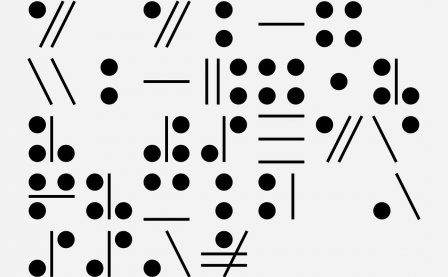He’s certainly not the only one, but Cameron Stallone really likes to fuck with time. Sonically, the woozy THC-addled reggae-psych underwater space jams1 he makes as Sun Araw never quite go anywhere. Then again, they never quite stay still either. The effect is one of transit without arrival. Ebb, flow, cycle, and return. Tracks have a tendency to merge into each other. On and on and on and on. Swelling bass lines, bubbling percussion, flabby synth stabs, languid guitars. And all of a sudden the record’s over, the silence startling after all that timeless fog.
Stallone is an artist for whom the term hypnagogia has always felt particularly appropriate. And I mean that in the strictest sense of the word. Sun Araw’s music is “presomnal.” It’s located precisely at that point between sleep and wakefulness when sensations get simultaneously drawn out and suspended.
Then there’s all the talk of the ancients, mythology, “neo-primitive vibes,” Stallone’s encrypted references to his musical idols. Not only does the music fuck with your sense of time as you experience it, it’s in constant and self-conscious conversation with its own history too. Even though this latest record, The Inner Treaty, has been released by Drag City, the long-standing association with Not Not Fun makes total sense in this respect. Sun Araw’s music always feels totally idiosyncratic to me. I couldn’t imagine ever mistaking it for anyone else. But it situates itself firmly in that interzone between then and now. Time out of joint.
It’s an attitude — an ethos actually — best exemplified on Stallone’s extraordinary collaboration Icon Give Thank with 70s reggae legends The Congos and fellow L.A. resident M Geddes Gengras from earlier this year. Honestly, my ears are still ringing with the utter blessedness of it. Sunshine. A ray of joyous reverberant light. The record brought together three very different perspectives on dub history, two from one end and one from the other, and the combined effect was magic. In 2012, not a helluva lot has sounded better. Testament to the fact that innovation does not always need to mean the unceremonious discarding of what has come before. Retrospection, not Retromania. A healthy kind of respect for the past without being beholden to it.
One thing occurs to me though as I listen to The Inner Treaty. Narratively, Stallone’s discography really fucks with time too. If you told me that Sun Araw had released all his material to date in the exact opposite order, I’d probably believe you. Each record he’s released has been noticeably different from the last. After the subdued, slow-burning jams of 2010’s On Patrol, the more upbeat and funky riddims of last year’s Ancient Romans, and the blissed-out neo-reggae of Icon Give Thank, The Inner Treaty finds Stallone in calmer waters again, plugging away at a series of strange, skuzzy dub grooves. Rhythmically, it’s all a bit more scattered and syncopated than anything we’ve heard before. Scrambled. Maybe even just a bit paranoid. But it’s really hard to identify anything you could call “progress” here, or indeed its inverse, “retreat.” Just a subtle but noticeable difference. Pretty much the same picture, but from another perspective.
That’s interesting, isn’t it? It seems to strike a chord with other current movements in the avant-underground. Progress is dead. Change, difference, multiplicity: these are the new ideals. But where an artist like James Ferraro or INTERNET CLUB simply abandons one set of techniques and moves on, The Inner Treaty finds Sun Araw playing around in territory that is at once familiar — this is still unmistakably Sun Araw — and yet not identical to anything that has come before.
Maybe “play” is the right word for it actually. It’s well documented how important improvisation is to Stallone’s recording practice. One way of thinking about it is as a kind of open-minded dabbling, a case of seeing-what-happens as art practice. And it seems to me that this is increasingly the way across a whole range of genres. Quick, often, and different. Those seem to be the artistic, if not necessarily the commercial, imperatives. (cf. Death Grips). Because there’s no hierarchy between hi- and lo-fi anymore, because sometimes less is more but sometimes more is more, because conceptual sophistication and just going with it exist in increasingly complex tension, it’s hard to pinpoint a teleology or even a movement here. That is, though it may not ever reach the heights of the Congos collaboration, The Inner Treaty is a great addition to that discography. It’s just not necessarily progress.
1. Something about Sun Araw seems to invite this sort of ludicrous descriptor. Previous efforts of note include Jordan Redmond’s “low-slung tropical psych-funk” and Elliott Sharp’s equally tasty “neo-psych-lo-fi-beach-scuzz.” Reed Scott Reid offers the following gems: “mudbath of overdriven slomo disco squelch,” “smudgwave,” and “apparently inchoate rambling no-fi jams.” [Please address all further long-winded, Sun Araw-related neologisms to @tinymixtapes]
More about: Sun Araw




